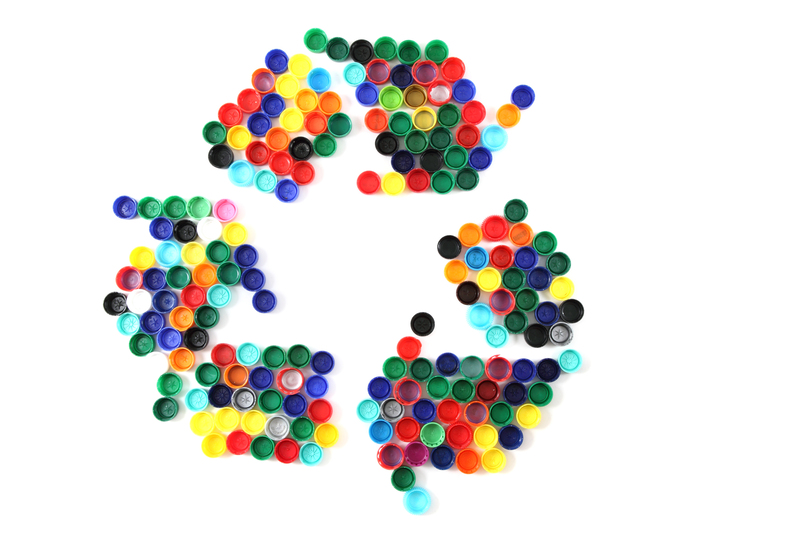Simple Steps to Responsibly Throw Away Masks and Gloves
In the wake of major health events, the use of disposable face masks and gloves has become commonplace worldwide. Whether for personal protection or mandated by regulations, these single-use items play a vital role in reducing the spread of germs and viruses. However, improper mask and glove disposal can severely impact our environment and public health. Properly throwing away masks and gloves is crucial. This comprehensive guide explores the simple steps to responsibly dispose of masks and gloves, why it matters, and helpful tips to ensure your actions contribute positively to your community and the planet.
Table of Contents
- Why Proper Disposal of Masks and Gloves Matters
- Understanding the Materials: What Are Masks and Gloves Made Of?
- Step-by-Step Guide to Disposing of Masks and Gloves Responsibly
- What NOT to Do with Used Masks and Gloves
- Eco-Friendly Alternatives to Disposable Masks and Gloves
- Frequently Asked Questions About Disposing Masks and Gloves
- Conclusion: Small Steps, Big Impact
Why Proper Disposal of Masks and Gloves Matters
With billions of disposable masks and gloves being used around the globe, the environmental toll has rapidly increased. Masks and gloves that are not discarded properly often end up:
- Littering public spaces: Streets, sidewalks, and parks are frequently found cluttered with used personal protective equipment (PPE).
- Clogging waterways: Rainwater washes discarded PPE into rivers, lakes, and oceans, contributing to water pollution and harming marine life.
- Threatening animals: Wildlife can become entangled in mask ear loops or ingest gloves, leading to injury or death.
- Increasing infection risk: Used PPE may carry germs or viruses, potentially infecting sanitation workers, waste handlers, and the public.
Safely and responsibly disposing of face masks and gloves is not just about cleanliness--it's about protecting lives and the environment.
Understanding the Materials: What Are Masks and Gloves Made Of?
To responsibly throw away masks and gloves, it's essential to know what they're made of. Most single-use protective masks and gloves are created from plastic-based materials:
- Surgical masks: Typically made from layers of non-woven polypropylene, a plastic polymer.
- Cloth masks: Crafted from reusable fabrics such as cotton or polyester.
- Disposable gloves: Commonly constructed from nitrile, latex, or vinyl--all synthetic forms of plastic or rubber.
Unfortunately, these plastic-based materials are not biodegradable. If not disposed of correctly, they may linger in landfills or natural environments for decades or even centuries. That's why knowing the correct way to discard masks and gloves is so important.
Step-by-Step Guide to Disposing of Masks and Gloves Responsibly
How should you throw away masks and gloves? Follow this simple, effective step-by-step process to ensure you're contributing to a safer world.
Step 1: Remove With Care
- For masks: Remove by handling only the ear loops or straps. Avoid touching the front of the mask, which may be contaminated.
- For gloves: Pinch the outside edge near the wrist and peel away from your hand, turning the glove inside out. Use the removed glove to pull off the second glove.
Step 2: Avoid Reuse and Place in Trash
Always remember, most disposable masks and gloves are designed for one-time use only. Do not attempt to wash or recycle them.
- Immediately place the removed items in a lined waste bin--preferably with a lid.
- Do not put masks or gloves in recycling bins: Almost all municipal recycling programs do not accept these items due to contamination risks and unsuitable materials.
Step 3: Protect Others With Double-Bagging
- If you are disposing of PPE after caring for a sick person, consider double-bagging.
- Seal the used mask or gloves in a plastic bag before placing them into your regular trash bag. This practice helps minimize direct contact for anyone handling your waste later.
Step 4: Wash Your Hands Thoroughly
Once you've disposed of your used mask or gloves, wash your hands immediately with soap and water for at least 20 seconds, or use a hand sanitizer containing at least 60% alcohol.
Step 5: Regularly Empty Your Bin
- Don't let your trash containing used masks and gloves pile up indoors.
- Empty the bin regularly and ensure the waste is collected by your city's waste management service.
Step 6: Spread the Word
Be proactive. Encourage family, friends, and neighbors to properly throw away their masks and gloves. Educating others multiplies your positive impact.
What NOT to Do with Used Masks and Gloves
In your commitment to disposing of masks and gloves responsibly, avoid these all-too-common mistakes:
- Do NOT litter! Never toss masks or gloves on the street, parking lots, or open landscapes.
- Do NOT flush! Flushing masks or gloves can clog toilets and drain systems, leading to expensive plumbing issues and polluting waterways.
- Do NOT try to recycle disposable masks or gloves. Most facilities cannot process these items, and including them contaminates the recycling stream.
- Do NOT burn masks and gloves at home--burning plastic releases toxic fumes dangerous to health and the environment.
Disposal tip: Always check with your local municipal guidelines for the most up-to-date recommendations on PPE disposal.
Eco-Friendly Alternatives to Disposable Masks and Gloves
Reducing your reliance on single-use PPE helps minimize waste generation and pollution. Here are some sustainable options:
- Use reusable cloth masks whenever possible. Wash after every use with hot water and detergent.
- Choose biodegradable masks and gloves made from natural fibers or compostable materials if available in your area.
- Minimize unnecessary PPE use--follow public health advice, but avoid using masks and gloves where they're not needed.
- Encourage businesses and schools to provide mask and glove collection bins for safe disposal or recycling where facilities exist.
Safe Sanitization for Reusables
For reusable masks and gloves, thorough cleaning is paramount. Wash cloth masks and non-medical gloves using soap and hot water after each use to ensure they remain effective and safe.
Frequently Asked Questions About Disposing Masks and Gloves
- Can I recycle my disposable mask or gloves?
No. Most disposable PPE contains materials that are not accepted in standard recycling programs. Always place them in regular household trash. - Are there special bins for PPE waste?
Some cities and healthcare facilities have installed dedicated bins for PPE. Use these when available, especially in public buildings, transit stations, or at events. - What should I do if I see discarded masks or gloves in public spaces?
If you feel confident and have proper protection (like a litter-picking device and gloves), you can safely place the items into a waste bin. Otherwise, report the litter to your local authorities to address the issue. - How do I dispose of PPE used by someone who is sick?
Double-bag the waste and seal it tight. Keep in a secure outdoor bin if possible, and ensure waste handlers know the bag contains biological waste.
Conclusion: Small Steps, Big Impact
The simple, daily act of responsibly throwing away masks and gloves makes a tremendous difference for our communities, sanitation workers, wildlife, and our planet's health. By following the easy steps outlined in this guide--careful removal, disposal in a lined trash bin, never recycling or littering, and switching to eco-friendly options when possible--you play an active role in creating a cleaner, safer future.
Remember: Every responsible action, no matter how small, adds up. Let's keep our environment clean, our neighbors safe, and make the simple steps to properly dispose of masks and gloves part of our everyday routine.
Take Action Today!
Share this article with friends and family to raise awareness of the importance of responsible mask and glove disposal. Together, we can make a lasting positive change--one piece of PPE at a time.


